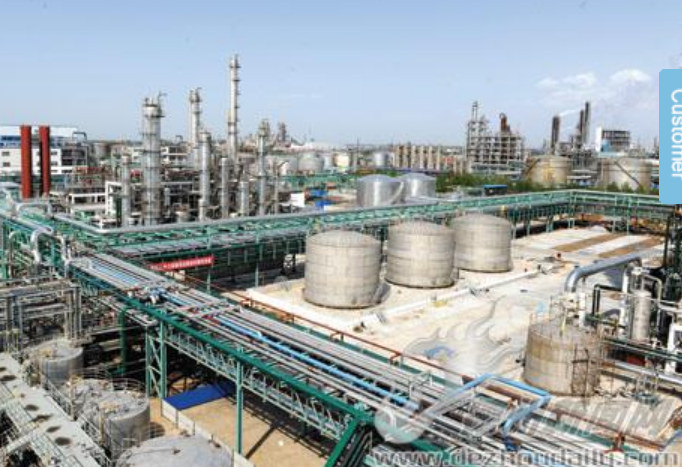Regulatory agencies overseeing food and beverage production mandate the use of food-grade materials wherever contact with food may occur. Packaging is subject to these regulations, prompting the development of food-safe plastics for packaging consumable goods. Food-grade plastics are produced following strict, government-regulated manufacturing standards to ensure they are safe for food contact.
Various plastics are approved for food contact and are widely used in food packaging. This article will explore the types of food-grade plastics commonly employed in the packaging industry.
Polyethylene Terephthalate (PET)
PET is widely used in packaging, found in soft drink bottles, single-use water bottles, food-grade containers, bakery trays, snack packs, and produce containers. Its popularity in food packaging stems from its resistance to degradation upon food contact. PET also offers advantages such as being lightweight, highly impact-resistant, and corrosion-resistant.
Crystallizable Polyethylene Terephthalate (CPET)
CPET has been modified to resist cracking at low temperatures, addressing a common issue with standard PET containers. It is more flexible and can withstand higher temperatures, making it ideal for plastic food trays used in conventional ovens, microwavable dinners, oven-safe plastic wraps, and microwaveable storage containers. CPET is frequently used for packaging ready-to-eat meals as well.
Polypropylene
Polypropylene is an ideal food-safe plastic for production processes that require high heat. It can be found in products ranging from prescription bottles to garden tools and automotive products. While fairly stiff, polypropylene is not as brittle as other common food packaging plastics. Food items that utilize polypropylene for packaging include yogurt, cream cheese/sour cream containers, ready-to-eat meals and VSP containers. Polypropylene has gained popularity for microwavable containers thanks to its high melting point.
Plastic Films
Plastic films come in various types, each with distinct qualities based on the materials they are made from. Common structures include lidding film, shrink wrap, vacuum skin packaging (VSP) film, stand-up pouches, and specialty bags. In general, plastic films offer several advantages, such as being lightweight and resistant to contamination. They can also be printed on, enhancing brand recognition and visual appeal. Below are some of the most commonly used plastics for making plastic films:

Low-Density Polyethylene (LDPE)
LDPE is the most affordable material used for plastic films. It is flexible, soft, transparent, and glossy, with high resistance to moisture, tearing, and chemicals. It is commonly used in plastic bags but is also found in squeezable food bottles, bread packaging, frozen food packaging, and flexible lids.
Linear Low-Density Polyethylene (LLDPE)
LLDPE shares many qualities with LDPE but has higher tensile and impact strength, along with improved heat-sealing properties. It also has the greatest flexibility among polyethylene sheeting types. In the food and beverage industry, LLDPE is primarily used for bottle caps and shrink wraps.
Ultra Low-Density Polyethylene (ULDPE)
ULDPE is a soft thermoplastic known for its excellent low-temperature flexibility and resistance to flex cracks. It offers high optical clarity and tear resistance, making it ideal for packaging cheese, meat, and coffee.
Medium-Density Polyethylene (MDPE)
MDPE is less commonly used compared to other polyethylene varieties, but it is stronger and more resistant to tears, punctures, and chemicals than LDPE. Additionally, it is oxygen-permeable, making it suitable for packaging baked goods, heavy-duty produce bags, wash bottles, and dispensing bottles.
High-Density Polyethylene (HDPE)
HDPE is the most widely used polyethylene film for food packaging. It is semi-translucent, highly solvent-resistant, and the least flexible yet strongest polyethylene film. Its strength makes it ideal for applications where maintaining shape is crucial, such as bottles for water, juice, or milk; margarine and butter tubs; cereal box liners; and retail or grocery bags.
Polypropylene (PP)
Polypropylene is typically translucent, allowing light to pass through but not clear visibility like PET. It offers high optical clarity, gloss, good tensile strength, and is cost-effective. Its barrier properties and high melting point make it ideal for items requiring high-temperature sterilization, such as baby bottles. Common uses include salad dressing bottles, yogurt containers, margarine tubs, and microwavable kitchenware.
Polycarbonate (PC)
Polycarbonate is a durable, transparent, heat-resistant thermoplastic with excellent impact resistance and optical clarity. It’s commonly used for sterile medical packaging, protecting contents from scratches, chemicals, and weathering. Additionally, it is found in commercial reusable water bottles and sterilizable baby bottles due to its robustness.
Polyvinyl Chloride (PVC)
PVC is a low-cost, versatile thermoplastic that can be rigid or flexible. It has high impact strength, good dimensional stability, and serves as an oxygen-permeable barrier to oil and grease. PVC is used in food and beverage tubing, as well as blister packaging for items like breath mints or gum.
Polyethylene Terephthalate (PET)
PET is a high-performance, clear thermoplastic known for its versatility in making films. It features excellent tensile strength, low moisture absorption, and superior dimensional stability across various temperatures. Commonly used for plastic bottles for carbonated drinks, snack food wrappers, jars, tubs, and bags, PET is a staple in food packaging. Biaxially-oriented polyethylene terephthalate (BOPET) is a variant made by stretching PET, used for faux-foil packaging and protective films on microwavable meals.
Polyvinylidene Chloride (PVDC)
PVDC is a synthetic thermoplastic that provides exceptional oxygen and moisture barriers. It is also resistant to heat, chemicals, oil, and grease, making it ideal for food and medicine packaging. Its ability to extend shelf life makes it a popular choice in these industries.
Polyamide (Nylon)
Polyamide, commonly known as nylon, is a strong material with a high melting point and excellent oxygen barrier properties. It resists grease, oil, and acidic foods without dissolving or absorbing them. Additionally, nylon is scratch, puncture, and flex-crack resistant, making it suitable for both microwave and conventional cooking applications.
















